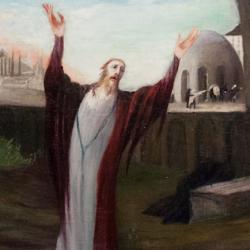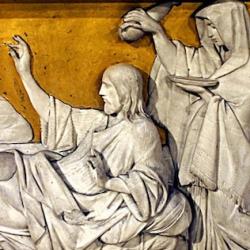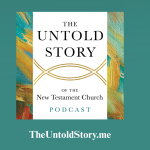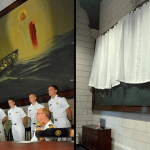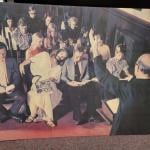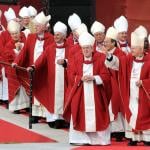The industrious John Paul Heil has produced another book, this on the Gospel of Matthew. The subtitle captures his approach: “Worship in the Kingdom of Heaven.” Heil points out that the book begins with the announcement of God’s presence in Jesus, who is “God With Us,” and with the worship of the magi. It ends with the disciples worshiping Jesus before being commissioned to invite others to join their worship.
Within that bracket, Heil focuses attention on what Matthew shows and teaches about worship, asking what readers of the Gospel are to learn about their own worship. He summarizes Matthew’s teaching under the headings of prayer, ethical worship, and ritualistic worship. Jesus’ temptations focus on worship (19), and in the Sermon on the Mount He teaches His disciples how to pray and fast (25-26). Jesus assures His disciples that their prayers will be heard, leads them in a liturgical feast and singing before He goes to Gethsemane, describes His death as the destruction of one sanctuary to make way for a new one. He teaches on prayer, and he prays.
At times, the approach is artificial. To be sure, the Twelve are sent out to confess Jesus to the tribes of Israel (Matthew 10), but this isn’t obviously a liturgical context, and Heil has to reach to make it fit: “Like the disciples, the members of the audience are to publicly confess Jesus before people, including in their communal worship” (47). The book is unnecessarily repetitive: After working through a section of the Gospel, Heil summarizes his findings, sometimes using nearly as many pages as the material being summarized.
Often, Heil uncovers unnoticed details. Abraham worshiped God before he was circumcised, and so he becomes a type of other Gentile God-worshipers listed in Matthew’s genealogy (6) and, in turn, of the Persian magi (7-8). After Peter’s mother-in-law rises from her sickness, she serves, like the angels who “served” Jesus after His temptations: “Her service of Jesus reaffirms his status as a worthy object of supplicatory worship, having gained divine healing power over the devil responsible for the evil of sickness” (36). Jesus’ assurance of His presence “to the end of the age” matches the original name “Immanuel,” indicating that He remains “an always present object of our authentic worship of God” (158).






